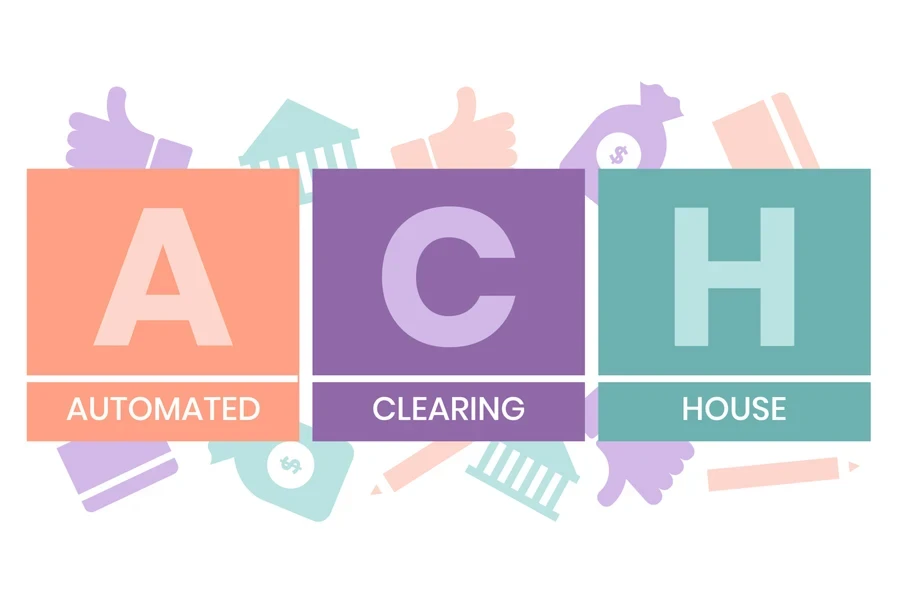Handling money in a business can feel like trying to keep too many balls in the air at once. ACH credit might be worth considering if you’re searching for an easier, more affordable way to pay employees, vendors, or customers.
This system has been a reliable part of U.S. banking for decades. By using its credit feature, businesses can simplify payments and sidestep many frustrations with slower or more complicated methods. Read on for a closer look at what ACH credit is and how it can work for your business in 2025.
Table of Contents
Quick overview of the ACH network
What is ACH credit, and how does it work?
Examples of ACH credits
The advantages of ACH credit
Potential drawbacks or limitations
Setting up ACH credit
ACH credit vs. ACH debit
The growing popularity of same-day ACH
Final words
Quick overview of the ACH network

Before discussing ACH credit, let’s examine the main network. The ACH network is like a secure digital highway connecting thousands of financial institutions across the United States. Instead of clearing transactions one by one in real-time, it processes large batches of payments at several points throughout each business day.
This batch-based approach helps keep costs low and ensures a consistent, predictable schedule for sending and receiving payments. The National Automated Clearing House Association (NACHA) governs this and sets the rules and guidelines every bank or payment processor must follow.
As a result, the same basic standards apply, whether you’re depositing payroll to ten employees or paying hundreds of vendors. This uniformity makes integrating ACH into most accounting software and online banking platforms easier, freeing you from the hassle of repeated manual data entry or dealing with multiple convoluted systems.
What is ACH credit, and how does it work?

In practical terms, an ACH credit is when your business “pushes” money into someone else’s bank account. However, for a transfer to go through, both the sender and receiver must approve it. This means the business or person making the payment and the one receiving the money must give the green light before the transaction happens.
Once both parties approve the transaction, the sender’s bank moves the money into the recipient’s account. This transfer, often called a “push” payment, can happen as a one-time transaction or be set up to happen automatically on a regular schedule.
For extra security and peace of mind, many ACH authorization forms allow the sender to retrieve funds if they accidentally send too much. This added safeguard helps prevent overpayment mistakes and keeps transactions more reliable.
Examples of ACH credits
- Direct deposit
- Purchasing goods online
- Government benefits
- Bill payments
The advantages of ACH credit

One of the biggest draws of ACH credit is how much simpler life can become for both you and your recipients. Here are some advantages of ACH credit:
- Cost savings: Wire transfers can eat into your budget with fees that climb as high as $50 per transaction. Credit card processing might take a percentage that adds up quickly. ACH fees, on the other hand, are usually quite modest.
- Security and reliability: Paper checks can be lost, intercepted, or tampered with. ACH payments are made digitally, making them harder to misplace or manipulate.
- Automated recordkeeping: Because ACH integrates nicely with payroll and accounting software, it’s easier to track what was sent, who was paid, and when. Businesses will spend less time matching numbers by hand, freeing them up for higher-level tasks.
Potential drawbacks or limitations

Like any payment method, ACH credit has downsides. Standard ACH transfers usually take one to two business days to process, which might be too slow if you need to pay someone immediately, though same-day ACH can sometimes speed things up.
You’ll also need to correctly enter the recipient’s account and routing numbers, as even a small typo can cause delays or failed payments. Additionally, ACH works well for payments within the U.S., but it’s not the best option for paying international vendors.
Businesses may need wire transfers or other specialized services to send money across borders. Also, if they want to send large or frequent ACH payments, their bank may review their account for security reasons, which could slow down the setup process. Not to mention, some banks have daily, weekly, or monthly limits on their ACH transactions, depending on the transaction (type and amount).
Setting Up ACH credit

The first step is to talk to your bank or payment processor. Many banks will let you apply for ACH credit capabilities on your existing business account. Still, they’ll want to know about your transaction volumes and the nature of your business (to assess potential risks). After your application is approved, consider doing the following before initiating a transfer:
- Integrate with software: If you use an accounting or payroll platform like QuickBooks, Xero, or Gusto, you can often link your bank account so ACH transactions will initiate within that software.
- Collect payee info: Ensure you have accurate bank details for everyone you plan to pay. Consider storing this information securely for recurring transactions.
- Security controls: Most banks or payment processors let you set limits, require dual approval for large transfers, or receive alerts for suspicious activity. These steps help keep your account safe.
- Test and train: Especially at the start, it pays to send small test payments to ensure everything is set up correctly. Also, if you have a finance team, ensure they’re comfortable with the new process.
ACH credit vs. ACH debit
Though both transactions happen on the same ACH network, the person who starts the transaction makes all the difference. ACH credit means you’re pushing the money out; ACH debit means the recipient pulls it from your account.
If you’re paying, ACH credit can be reassuring—money doesn’t leave your account until you say so. If you’re getting paid regularly, an ACH debit can help you avoid chasing down late-paying customers.
The growing popularity of same-day ACH
Same-day ACH is a relatively new upgrade that addresses the old complaint about ACH’s slower pace. Thanks to changes in NACHA rules, many banks now let you send or receive ACH transfers on the same day, as long as you submit your request before a certain cutoff time (often early afternoon). Here are some aspects to note:
- Faster turnaround: In some cases, recipients can see the funds in their account by the end of the same day, which can be crucial if businesses are closing out a deal or rushing payroll at the last minute.
- Slightly higher fees: Banks usually charge more for same-day processing, and the dollar limits might be lower than standard ACH.
- It’s still not instant: While same-day ACH is faster, there’s still a lag of a few hours between sending the money and receiving it. If instant payments are your priority, you might need to consider other options.
Final words
Overall, ACH credit strikes a sweet balance of affordability, reliability, and control. It’s a system that’s stood the test of time in the U.S. for everything from payroll to vendor invoices and government refunds. While it doesn’t always match the speed of a wire transfer or the convenience of a credit card, recent improvements like same-day ACH have bridged the gap considerably.
If you aim to reduce the friction and costs associated with routine payments, giving ACH credit a try is well worth your time. By understanding how it fits into your overall financial workflow and taking a few steps to set it up securely, you can keep your business finances flowing smoothly—and say goodbye to some of the stress that comes with managing multiple payment methods.




